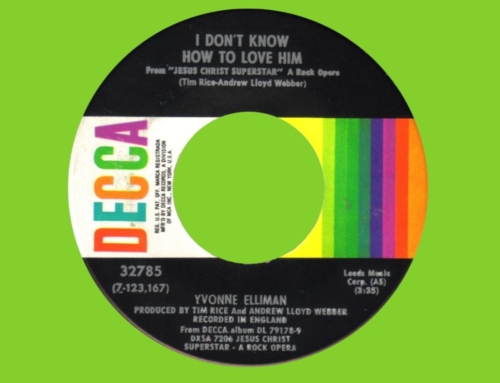The New Evangelization is tough to pin down. Typically we think of it as re-proposing the Gospel to formerly Christian peoples. Lay involvement is also more central than in previous ages. But apart from a new object and new agents, there isn’t much to distinguish the New Evangelization from the Old. Though I once wrote an article arguing for its novelty based upon a heightened emphasis on witness, I recently realized that martyrs have always stood at the heart of the Church’s evangelical efforts. And yet, while there is nothing new under the sun, an inquiry about Christian witness remains worthy of pursuit and, hence, this shall serve as my second attempt to elaborate the New Evangelization.
So first, who are we witnessing to? The current American culture evades a neat description. Contemporary debates about sexual and marital liberty have become increasingly shrill, and the language of morality is in a state of terrible disarray. As Alasdair MacIntyre recognized over thirty years ago, without universally acceptable standards of morality, public discourse continues to erode. Many in positions of power employ emotivist reasoning (in MacIntyre’s words, “the doctrine that all . . . moral judgments are nothing but expressions of preference, expressions of attitude or feeling . . . ”) to self-justify an equality masquerade. Oftentimes, there is no arguing these points with our interlocutors. Driven by a commitment to freedoms and rights, which conflict with a Christian or even natural law–based understanding of the human person, policy makers and pundits alike advocate a push further and further from what we know to be true, and yet there is a certain logic to their claims. Their reasoning is like the perfect circle that G. K. Chesterton so aptly described in Orthodoxy:
[The madman’s] mind moves in a perfect but narrow circle. A small circle is quite as infinite as a large circle; but, though it is quite as infinite, it is not so large. In the same way the insane explanation is quite as complete as the sane one, but it is not so large . . . the strongest and most unmistakable mark of madness is this combination between a logical completeness and a spiritual contraction.
As interlocutors depart from largely different premises, each claiming some rationality for their assertions, we are incapable of securing a “victory” for one morality over the other in the public square. As one Macintyre scholar summarizes:
If no one can persuade anyone else to do what they want, then only coercion . . . remains. This is why, MacIntyre says, political arguments are not just interminable but extremely loud and angry, and why modern politics is simply a form of civil war.
Into this tumult of superficial and ultimately manipulative reasoning wades the witness. He has options. One avenue is that of despair and manipulation. The same scholar goes on: “Because I cannot persuade people, and because we cannot have any common good that is not purely temporary and based on our separate individual desires, there is no kind of social relationship left except for each of us trying to use the others to achieve our own selfish goals.” But this option is not available to the Christian. For, he believes that the good life is not based on social expediency or power, but on a comprehensive vision of human happiness and flourishing revealed in Christ.
So then with hope for rational discourse enfeebled by the current state of affairs, how can a Christian witness hope to gain a hearing? The witness offers an invitation, the invitation into a bigger, a brighter, and a more beautiful world. Chesterton goes on:
I mean that if you or I were dealing with a mind that was growing morbid, we should be chiefly concerned not so much to give it arguments as to give it air, to convince it that there was something cleaner and cooler outside the suffocation of a single argument . . . A man cannot think himself out of mental evil; for it is actually the organ of thought that has become diseased, ungovernable, and, as it were, independent. He can only be saved by will or faith.
As our contemporaries grow weary of truth claims, Christian witness in the New Evangelization can begin with beauty, particularly the beauty of art, culture, and community. As Fr. Robert Barron once remarked about the evangelical power of beauty:
I’ve always found something winsome and unthreatening about the beautiful. You can say, ‘Look at that! Look at how beautiful that is—that painting, that sculpture, that building!’ In Jesus, and the saints who cluster around him, you see the beauty of a life, the beauty of a commitment. And this beauty can often be a less threatening way in. Once you are through the door of the beautiful, you can share the good and the true.
The doors of our communities must not only remain open to the world, but also represent the threshold to the beautiful, for if what lies within is not sufficient to attract, what point is there in leaving them ajar?
✠
Photo Credit: Joseph Chen, O.P.







